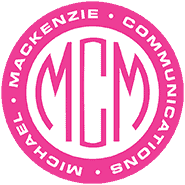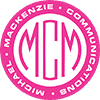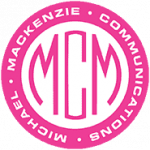Images are an essential element of any website, contributing to both user engagement and aesthetic appeal, but images also have the potential to significantly enhance your site’s SEO performance. Optimizing your images for SEO can improve your website’s load speed, increase visibility in search engine results and drive more organic traffic. Here’s how to maximize the SEO performance of your website’s images.
Steps to Optimize Images for SEO
1. Use the Correct Image File Format
While there is no single best image format for all scenarios, carefully choosing the right image file type is crucial for balancing quality and performance:
WebP (Web Picture): Designed for the web and is the ideal format for most web-based scenarios. WebP supports both lossy and lossless compression, allowing for high-quality images with small file sizes. WebP lossless images are 26% smaller in size compared to PNGs, and WebP lossy images achieve an average of 30% more compression than JPEGs, making it the most efficient format for both quality and size. WebP was introduced in 2010 but it only gained widespread browser support in the last couple of years. WebP also supports both transparency and animations.
PNG (Portable Networks Graphics): Used for images that require high quality and transparency, though they tend to have larger file sizes. PNG is a raster-based file format with lossless compression; meaning, it discards no data and so is superior to JPEG when it comes to rendering fine detail or complex imagery. Visuals with clean lines and rich colors display the best when saved as a PNG. However, because it performs no inherent “lossy” optimization on its content, the file size is much larger, compared to JPEG and WebP.
JPEG (Joint Photographic Experts Group): Pixel-based raster file suitable for complex images like photographs and images with lots of color, but they’re less efficient than WebP in compression. JPEG is a lossy compression format; meaning, it discards certain data which is not essential to viewing the type of imagery it is meant to render.
SVG (Scalable Vector Graphics): Best suited for logos, icons, and other “flat” graphics that use simpler colors and shapes. SVG is a vector file format, which stores images via mathematical formulas based on points and lines on a grid. It is extremely flexible, easy to update, and doesn’t lose quality when resized.
GIF (Graphics Interchange Format): Typically used for animations. GIF is a bitmap format with very limited compression, very limited color palette and huge size, so use sparingly.
2. Use Descriptive and Relevant File Names
Search engines rely on file names to understand the content of an image. Rename your files with descriptive keywords that are relevant to the image’s content. For example, instead of “IMG_6177.jpg,” use “technical-support-professional.jpg.”
3. Add Proper Alt Text
Alt text serves as an alternative description of the image for search engines and visually impaired users. Make your alt text clear, concise and keyword-rich without keyword stuffing. For example: “IT Technical Support Professional Working on Computer in Monitoring Control Room with Digital Screens.”
4. Include Image Title Tags and Captions
Title Tags: These provide additional context about the image. While not as critical as alt text, they can contribute to SEO.
Captions: Image captions are visible to users and can enhance engagement. Include relevant keywords naturally within your captions.
6. Write Detailed Image Descriptions
Image descriptions in metadata can provide additional context for search engines and improve discoverability in image search results.
5. Compress Images Without Sacrificing Quality
Large image files can slow down your website. Be sure to properly size your images and output your images as WebP as they are created. However, if that is not possible, use tools to compress images and resize before uploading to your site. There are also several plugins available on WordPress that can globally optimize the images on your site.
7. Add Images to Structured Data
Structured data allows you to provide search engines with detailed information about your images, such as product or event details. Including images in your structured data can increase the chances of your content appearing in rich results.
8. Configure Open Graph Meta Tags and Twitter Cards
Open Graph meta tags and Twitter Cards ensure that your images display correctly when shared on social media platforms. Proper configuration improves user engagement and can drive traffic back to your site.
Final Thoughts
By investing time in image SEO, you’re not just enhancing your website’s visual appeal but also improving its performance, accessibility and visibility. Use WebP formats for efficient compression, and follow image best practices like adding detailed title tags, descriptions and captions. These efforts can make a measurable difference in your overall SEO strategy and help you stay competitive in search rankings.
This blog is courtesy of MMC Web Developer Allison Stephanouk



